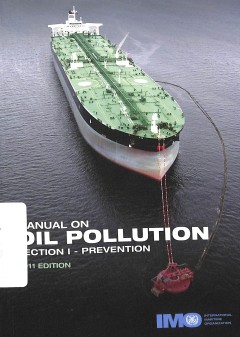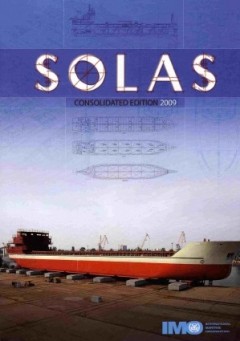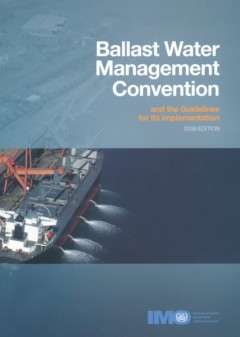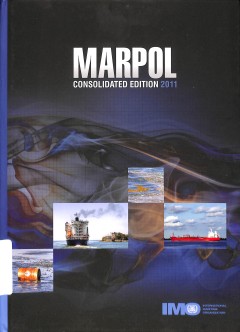Ditapis dengan

Key performance indicators : the 75 measures every manager needs to know
By identifying and describing the most powerful financial and non-financial KPIs, this book will make life easier for you by defining them, explaining how and when they should be used and providing a rich library of KPIs that have been proven to significantly improve performance.
The book presents case examples to illustrate t…
- Edisi
- -
- ISBN/ISSN
- 978-0-273-75011-6
- Deskripsi Fisik
- xxviii, 347 p., ; illus : 24 cm ; index
- Judul Seri
- -
- No. Panggil
- 658.4013 MAR k

Psychosocial risk assessment in organizations: Concurrent validity of the bri…
The Management Standards Indicator Tool (MSIT) is a 35-item self-report measure of the psychosocial work environment designed to assist organizations with psychosocial risk assessment. It is also used in work environment research. Edwards and Webster presented a 25-item version of the MSIT based on the deletion of items having a factor loading of < .65. Stress theory and research suggest that p…
- Edisi
- Vol. 27, No. 4, 403–412
- ISBN/ISSN
- 1464-5335
- Deskripsi Fisik
- 11 p.
- Judul Seri
- Work & Stress
- No. Panggil
- ACT MG HOU p C.1

Manual on oil pollution : section I - prevention
- Edisi
- 2011 Edition
- ISBN/ISSN
- 978-92-801-4244-0
- Deskripsi Fisik
- vi, 138 hlm., 21 cm
- Judul Seri
- -
- No. Panggil
- TXT MR MAN m
- Edisi
- 2011 Edition
- ISBN/ISSN
- 978-92-801-4244-0
- Deskripsi Fisik
- vi, 138 hlm., 21 cm
- Judul Seri
- -
- No. Panggil
- TXT MR MAN m

Solas : consolidated edition 2009
Of all the international conventions dealing with maritime safety, the most important is the International Convention for the Safety of Life at Sea, better known as SOLAS, which covers a wide range of measures designed to improve the safety of shipping. The Convention is also one of the oldest of its kind: the first version was adopted in 1914 following the sinking of the Titanic with the loss …
- Edisi
- Fifth Edition
- ISBN/ISSN
- 978-92-801-1505-5
- Deskripsi Fisik
- viii, 418 hlm., 33 cm
- Judul Seri
- -
- No. Panggil
- TXT MR IMO s

Ballast water management convention and the guidlines for its implementation
This edition reproduces : the text of the international Convention for the Control and Management of Ships 'Ballast Water and Sediments, 2004' 1. The text of the International Convention for the Control and Management of Ships's Ballast Water and Sedimens, on 2004; 2. Four Conference resolutions adopted at the International Conference on Ballast Water Management for Ships held at IMO's Headqu…
- Edisi
- -
- ISBN/ISSN
- 978-92-801-1503-1
- Deskripsi Fisik
- xi, 234 p., 21 cm
- Judul Seri
- -
- No. Panggil
- TXT MR IMO b

International convention on civil liability for buker oil pollution damage, 2001
The purpose of the convention is to ensure the payment of adequate, prompt and effective compensation to victims of pollution caused by the escape or discharge of bunker oil from ships
- Edisi
- 2001 Ed.
- ISBN/ISSN
- 92-801-0032-7
- Deskripsi Fisik
- ix, 70 p., 21 cm
- Judul Seri
- -
- No. Panggil
- TXT MR IMO i

Section II manual on oil pollution : contingency planning
This publication, prepared by the Marine Environment Protection Committee of the International Maritime Organization (IMO). Supersedes the 1988 edition of section II of the Manual on Oil Pollution.
- Edisi
- 1995 Ed.
- ISBN/ISSN
- 978-92801-1330-3
- Deskripsi Fisik
- vii, 74 p., 21 cm
- Judul Seri
- -
- No. Panggil
- TXT MR IMO s

Marpol : consolidated edition 2011 - Articles, protocols, annexes and unified…
The International Convention for the Prevention of Pollution from Ships, 1973 (MARPOL Convention), is concerned with preserving the marine environment through the prevention of pollution by oil and other harmful substances and the minimization of accidental discharge of such substances. Its technical content is laid out in six Annexes, the first five of which were adopted by the 1973 Convention…
- Edisi
- Consolidated Ed. 2011
- ISBN/ISSN
- 978-92-801-1532-1
- Deskripsi Fisik
- ix, 447 p., 33 cm
- Judul Seri
- -
- No. Panggil
- TXT MR IMO m

The maritime dimension of european security: Seapower and the european union
- Edisi
- -
- ISBN/ISSN
- 978–1–4039–9512–4
- Deskripsi Fisik
- xiii, 227 p.
- Judul Seri
- -
- No. Panggil
- TXT MR BAS t
- Edisi
- -
- ISBN/ISSN
- 978–1–4039–9512–4
- Deskripsi Fisik
- xiii, 227 p.
- Judul Seri
- -
- No. Panggil
- TXT MR BAS t

The obligation to keep value chain management simple and standard
Asserts that by examining value chain management (VCM) in a systematic and consistent way, overall speed, certainty and cost-effectiveness can be improved. Seeks to promote the full benefits of VCM by encouraging the maximum degree of common expression, proceduress and communication, and suggests ways in which this can be done. Identifies four key steps in the successful application of VCM: agr…
- Edisi
- Volume 2 · Number 4 · 1997 · 124–133
- ISBN/ISSN
- -
- Deskripsi Fisik
- 12 p.
- Judul Seri
- Supply Chain Management: An International Journal
- No. Panggil
- ATC LO TOM t

New research : a new forecasting model for the diffusion of ISO 9000 standard…
ISO 9000 standards for quality system management are involving a higher and higher number of enterprises and organizations. This paper presents a detailed analysis of certification diffusion in Italy and in some European countries with similar economic structures. Benchmarking and evolution forecasts are based on the “logistic model”, traditionally used for studying biological growth phenom…
- Edisi
- Vol. 21 No. 1, 2004 pp. 32-50
- ISBN/ISSN
- 0265-671X
- Deskripsi Fisik
- 23 P.
- Judul Seri
- International Journal of Quality & Reliability Management
- No. Panggil
- ATC LO FRA n

Product carbon footprint developments and gaps
Over the last decade, multiple initiatives have been undertaken to learn how to capture the carbon footprint of a supply chain at a product level. The purpose of this paper is to focus on the process of standardization to secure consistency of product carbon footprinting (PCF) and to outline how the current developments in PCF support the need for a standardized method to measure and report env…
- Edisi
- Vol. 42 No. 4, 2012
- ISBN/ISSN
- -
- Deskripsi Fisik
- 19 p.
- Judul Seri
- International Journal of Physical Distribution & Logistics Management
- No. Panggil
- ATC LO KRO p

Interacting standards: a basic element in logistics networks
Logisticians have always viewed standards as solutions for improving operational compatibility and coordination. This paper aims to contribute to a greater understanding of how standards, uponwhich logistics systems are designed, developed and coordinated, interactwith each other and with other resources in a logistics network for the purpose of improving efficiency and effectiveness.
- Edisi
- Vol. 36 No. 2, 2006 pp. 93-111
- ISBN/ISSN
- -
- Deskripsi Fisik
- 21 p .
- Judul Seri
- International Journal of Physical Distribution & Logistics Management
- No. Panggil
- ATC LO ROU i

Benefits of implementing management system standards - a case study of certified
The purpose of this paper is to explore the extent of implementing management system standards among ISO (and other) certified companies in the Pearl River Delta and its effect on the perceived benefits.
- Edisi
- -
- ISBN/ISSN
- -
- Deskripsi Fisik
- 14 p
- Judul Seri
- -
- No. Panggil
- ATC MG RIV b

The complexities of working in the international records management business …
Focuses on the records management function in national, multi‐national and service organizations. Describes the problems that can occur when documents are generated and managed in different countries by staff with different cultural assumptions, logistical options, languages and legal requirements.
- Edisi
- Vol. 13 Issue: 3, pp.111-116
- ISBN/ISSN
- -
- Deskripsi Fisik
- 17 p.
- Judul Seri
- Records Management Journal
- No. Panggil
- ATC LO VAI t

ISO 9001 diffusion analysis according to activity sectors
The purpose of this paper is to analyse the evolution of the world-wide diffusion, according to industrial sectors of activity, of the ISO 9000 family of quality standards.
- Edisi
- Vol. 111 No. 2, 2011 pp. 298-316
- ISBN/ISSN
- -
- Deskripsi Fisik
- 22 p.
- Judul Seri
- Industrial Management & Data Systems
- No. Panggil
- ATC LO BER i

Integration between manufacturers and third party logistics providers?
The purpose of this study is to analyse the extent of the integration between manufacturers and third party logistics (TPL) providers at present and how the integration is expected to develop in the near future. The focus is on studying what tasks are part of the cooperation, what information and communications technology (ICT) tools are used for support, and what types of services are supplied…
- Edisi
- Vol. 28 Issue: 4, pp.331-359
- ISBN/ISSN
- -
- Deskripsi Fisik
- 32 p.
- Judul Seri
- International Journal of Operations & Production Management
- No. Panggil
- ATC LO LEM i

Environmental management system certification and its influence on corporate …
The purpose of this paper is to analyze the existence of differences in the implementation of environmental practices between companies that possess some form of certified environmental management system (ISO 14001 or EMS) and those that do not have any such system. This study also investigates whether companies with a certified EMS are also making additional environmental demands on their supp…
- Edisi
- Vol. 28 No. 11, 2008 pp. 1021-1041
- ISBN/ISSN
- -
- Deskripsi Fisik
- 28 p .
- Judul Seri
- International Journal of Operations & Production Management
- No. Panggil
- ATC LO DIA e

Does morality explain opportunism in marketing channel negotiations?: The mod…
Retailers are increasingly forced to enter negotiations with new suppliers and have less time to develop trusting relationships prior to awarding sourcing contract. Such supplier negotiations are often guided by self-interest-seeking behavior. However, not all exchange partners behave opportunistically when given the opportunity and little is known about how and when opportunism actually occurs…
- Edisi
- Vol. 37 No. 2, 2009 pp. 142-160
- ISBN/ISSN
- -
- Deskripsi Fisik
- 21 p .
- Judul Seri
- International Journal of Retail & Distribution Management
- No. Panggil
- ATC LO KHA d

Diffusion of quality standards in the hospitality sector
The aim of this study is to compare the diffusion of certifications under two quality management systems (QMSs) in the tourism sector in Spain: the generic ISO 9001 international standard; and the Spanish industry-specific “Q” standard.
- Edisi
- Vol. 33 No. 5, 2013 pp. 504-527
- ISBN/ISSN
- -
- Deskripsi Fisik
- 26 p.
- Judul Seri
- International Journal of Operations & Production Management
- No. Panggil
- ATC LO BER d

CALS - a strategy for business engineering
CALS is a strategy developed by government and industry over the past ten years to use information technology and international standards to enable improvements in business processes. The approach consists of a logical framework which has both a technical segment and a management segment. Additional components in the strategy include the development of models, defining visions, and capturing …
- Edisi
- Vol. 9 Issue: 1, pp.18-23
- ISBN/ISSN
- -
- Deskripsi Fisik
- 8 p.
- Judul Seri
- Logistics Information Management
- No. Panggil
- ATC LO LIT c

Adoption of interorganizational system standards in supply chains: An empiric…
This study aims to empirically examine the factors that affect the adoption of RosettaNet standards. The four factors examined in this study are partners’ power, trust, products’ characteristics, and government influence.
- Edisi
- Vol. 108 No. 4, 2008 pp. 529-547
- ISBN/ISSN
- -
- Deskripsi Fisik
- 23 p.
- Judul Seri
- Industrial Management & Data Systems
- No. Panggil
- ATC LO BOO a
 Karya Umum
Karya Umum  Filsafat
Filsafat  Agama
Agama  Ilmu-ilmu Sosial
Ilmu-ilmu Sosial  Bahasa
Bahasa  Ilmu-ilmu Murni
Ilmu-ilmu Murni  Ilmu-ilmu Terapan
Ilmu-ilmu Terapan  Kesenian, Hiburan, dan Olahraga
Kesenian, Hiburan, dan Olahraga  Kesusastraan
Kesusastraan  Geografi dan Sejarah
Geografi dan Sejarah